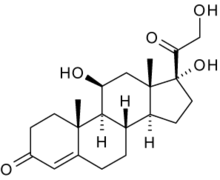Structural Biochemistry/Oral
Introduction
[edit | edit source]The oral medical administration is the process of delivering the drug through the mouth so that it enters the alimentary tract. It is known to be the most frequently used route of drug administration due to the fact that it is convenient and cost effective. Drugs that enter through this route usually comes in solid dose forms in order to promote the high degree of drug stability, but they can also come in liquid forms. Different drugs can be taken orally at different time intervals, which can vary between before or after ingesting food.
General pathway
[edit | edit source]Most of the absorption process is accomplished between five and thirty minutes after ingestion, but absorption is not usually complete for as long as six to eight hours. Once drugs passes through the stomach, the drug needs to proceed from the small intestine into the bloodstream. The membrane separating the intestinal wall from blood capillaries is made up of two layers of fat molecules, making it necessary for substances to be lipid soluble or soluble in fats to pass through. Even after successful absorption into blood capillaries, however, substances must still pass through the liver for a screening process before being released into the general circulation around the body. Enzymes in the liver are capable of breaking down the molecular structure of certain drugs, thus reducing the amount that eventually enters the blood stream. As a result of all these natural barriers, orally administered drugs must be ingested at deliberately elevated dose levels, to allow for the fact that some proportions of the drug will not make it through to the bloodstream.
Disadvantages
[edit | edit source]Administering drugs orally can potentially be problematic due to the unpredictable nature of gastrointestinal absorption. [1] Factors such as ingested food can alter the pH within the gut, gastric motility, emptying time, and the rate of drug absorption.
Anti-asthmatic agents and Anti-Inflammatory
[edit | edit source]
Cortisol or hydrocortisone is a compound of the class called corticosteroids. This compound is the anti-inflammatory agent that is used in medicine. Scientists have discovered that the inflammatory of the breathing passages can contribute to the attack of asthma. As a result, it was recommended to control the oral inflammatory together by including corticosteroids in medicine and inhaling bronchodilators to treat asthma. However, corticosteroids can have negative side effects. For instance, this compound can inhibits growth in children. Hence, scientists started to use synthetic corticosteroids to be used for inhalation. In addition, scientists have discovered a synthetic steroid that can be used as anti-inflammatory. Fluticasone is the compound that replace its hydrogen with flourine that would help to activate the compound's ability to be used as anti-inflammatory. This steroid would bind to the protein inside the cell nuclei called the glucocorticoid receptor in order to prevent the inflammatory response in the body.
References
[edit | edit source]- Shepherd, M. "Administration of Drugs 1: Oral Route." Nursing Times, 2011. <http://www.nursingtimes.net/nursing-practice/clinical-zones/prescribing/administration-of-drugs-1-oral-route/5033729.article>
Vollhardt, Peter. Schore, Neil. Organic Chemistry 6th Edition. W.H. Freeman Company. New York. 2011.
Purves, Dale, "Principles of Cognitive Neuroscience", Sinauer Associates, Inc., 2008
Levinthal, Charles, "Drugs, Behavior, and Modern Society", Pearson Education, Inc., 2008
- ↑ Vollhardt, Peter. Schore, Neil. Organic Chemistry 6th Edition. W.H. Freeman Company. New York. 2011.
